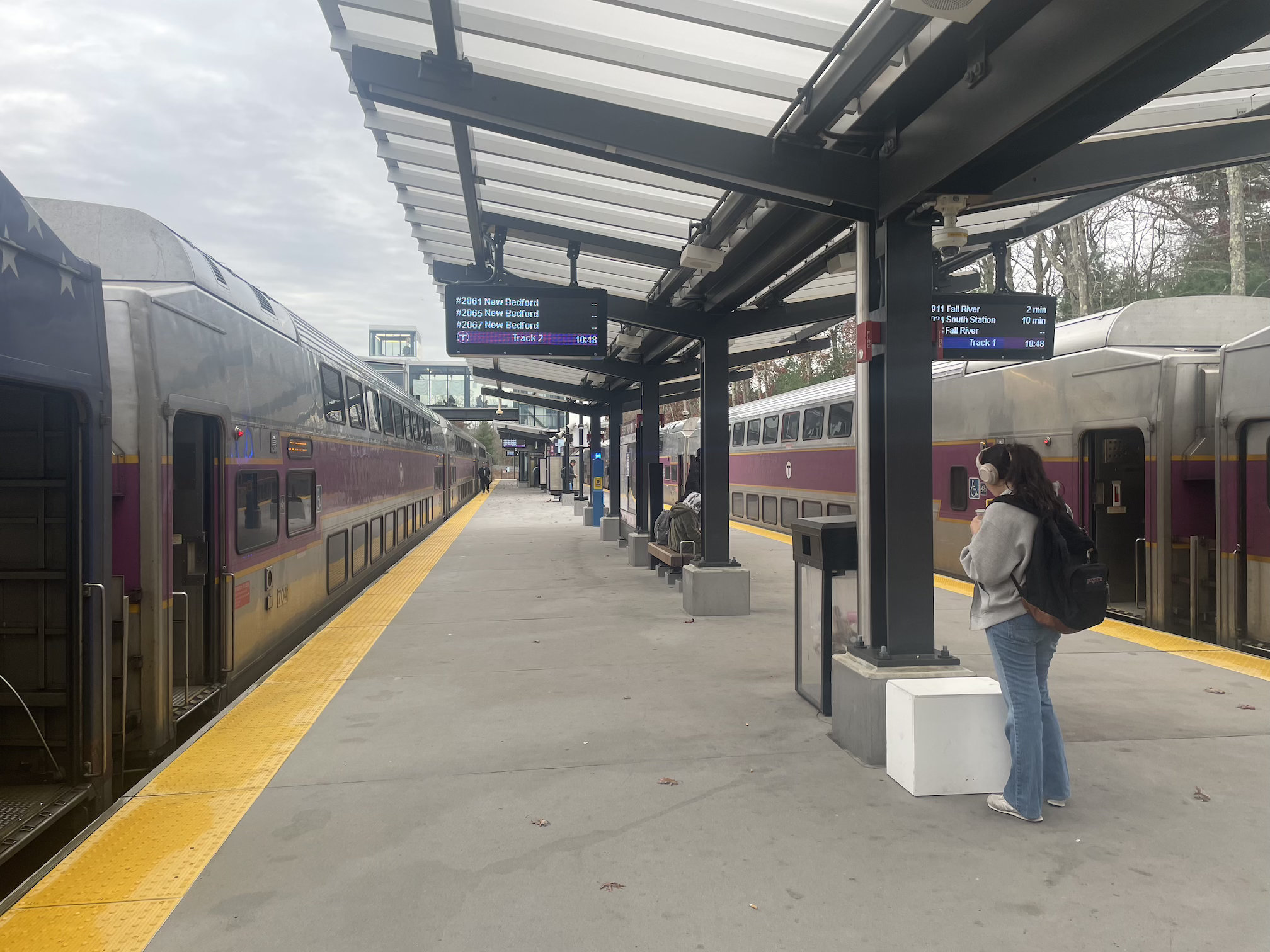The City of Boston will remove a shared bus-and-trucking lane through the Seaport neighborhood after acknowledging that the design, which was frequently blocked by cars, failed to deliver measurable benefits to bus riders.
"Based on the analysis of this data and feedback, we have decided to remove the dedicated bus lane markings, though we will keep the successful safety improvements such as pedestrian-friendly signals and bike lanes," wrote Jascha Franklin-Hodge, the City of Boston's Chief of Streets, in a memorandum posted to the city's website.
Paint wasn't protection
The City of Boston started installing the new bus-and-trucking lane last fall, and from the beginning, pitched the changes as a short-term pilot project that would be evaluated based on its effectiveness.
In a memorandum released earlier this month, the city shared their findings from that evaluation.
"The temporary materials used for the bus lane, lack of enforcement, and
increased signal delay at key intersections resulted in no clear benefit to bus riders," according to the city.
In field observations, the Boston Transportation Department observed thousands of drivers violating the bus/truck lane on a daily basis.
"On non-event days one month into the pilot, close to 3,000 violations were observed between South Station and BCEC," according to the city's memo.
One survey respondent confessed to city officials that "I often drive into the bus lane to go around a vehicle traveling the speed limit to get somewhere faster."
All that traffic illegally blocking the bus lanes severely undermined its effectiveness. Immediately before the bus lane pilot, MBTA Route 7 buses took an average of 7.7 minutes to traverse the 1.5-mile route in the morning peak hour, and the most congested bus trip took 15.7 minutes.
Five months into the pilot, the City of Boston found that trip times had not changed at all – in fact, the maximum bus trip time had gone up slightly, to 15.8 minutes.
MBTA service cuts also made it difficult for the city to justify a dedicated bus lane on Summer Street.
While bus stops for the 7 are frequently crowded with long lines during rush hours, overall service and ridership on the route are both far below what they were before the pandemic.
Today, the T operates a little over 50 trips a day on the 7, down from over 90 trips per day in 2019. On Saturdays, there's a 40-minute wait between buses, and on Sundays, there's no service at all.
Developers called bus lane 'a great betrayal'
Even before it began, the pilot project faced intense antagonism from powerful Seaport developers and bureaucrats from quasi-public agencies like Massport and the Mass. Convention Center Authority, both of which reap millions of dollars a year in parking revenue.
An early plan called for center-running bus lanes, which would have been physically separated from adjacent vehicle lanes to help calm traffic on the street and make it harder for illegal drivers to block to bus lane.
But Massport and the Convention Center Authority lobbied intensely against that more effective design, leading the city to compromise with a curbside "bus-and-freight" lane.
In a meeting between the city and Seaport business owners this March, Jonathan Davis, a founder of The Davis Companies, excoriated City Hall officials for their efforts to improve transit service in the neighborhood.
Davis was part of the development team that built the new Seaport Omni Hotel, which is wedged between Summer Street and the neighborhood's busiest trucking route, the South Boston Bypass Road.
"The reality is, the nature of the traffic that comes here is never coming by public transportation," asserted Davis. "The people who are staying in hotels in other parts of the city, and you know that they're in every part of the city and beyond, they are not coming [to the convention center] by public transportation. Full stop. This is a great betrayal for us."
Ironically, Davis's company is in involved in several large-scale development proposals whose approvals hinge on promises that future tenants will use public transit instead of adding more cars to the region's congested streets and highways.
Future bus projects on Summer Street remain likely
The City of Boston isn't writing off the Summer Street bus lane pilot entirely.
New flexpost-separated bike lanes that the city installed as part of the pilot helped create a more consistent and well-defined bike route across the Seaport, and bicycle traffic increased considerably. The City of Boston's seasonal bike counts recorded a 77 percent increase in bike traffic at Summer and D Street, next to the convention center.
The city will also keep new "no turn on red" regulations in place to help protect the neighborhood's growing volumes of foot traffic.
In the next few years, the T plans dramatic service improvements to the 7 bus route, which would be extended to North Station and Sullivan Square and gain considerable increases in service frequency under the MBTA's bus network redesign.
Boston officials acknowledge that while the curbside bus-and-trucking lanes didn't work, some more effective form of dedicated bus infrastructure will be necessary to accommodate the T's planned service improvements alongside the neighborhood's rapid growth.
"As Summer Street becomes an increasingly important transit corridor, we expect to revisit potential approaches to bus priority building on what was learned from this pilot to inform future designs," wrote Boston's Chief of Streets Franklin-Hodge.
In the meantime, over a million square feet of new office and lab space are now under construction along Summer Street.
The bus lane's naysayers will soon have a chance to experience firsthand how their preferred street design will handle all the additional traffic.






